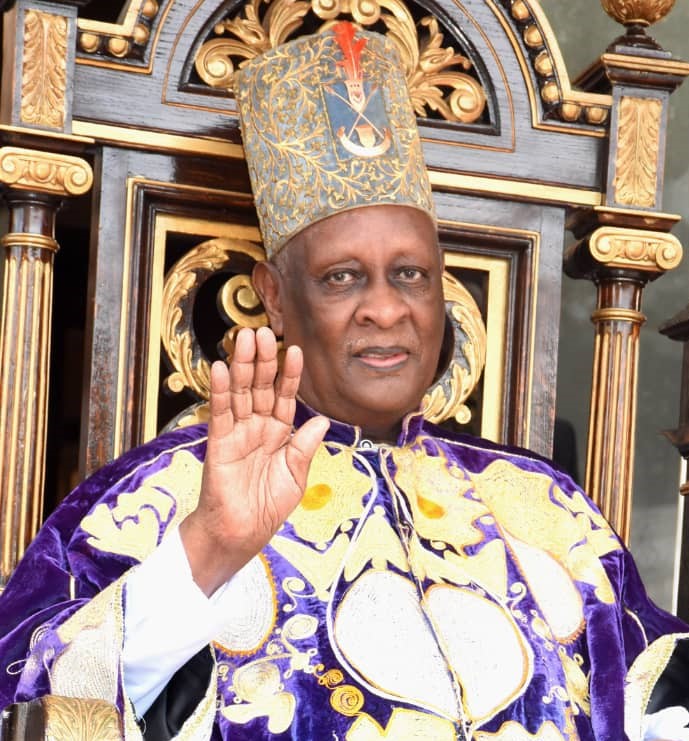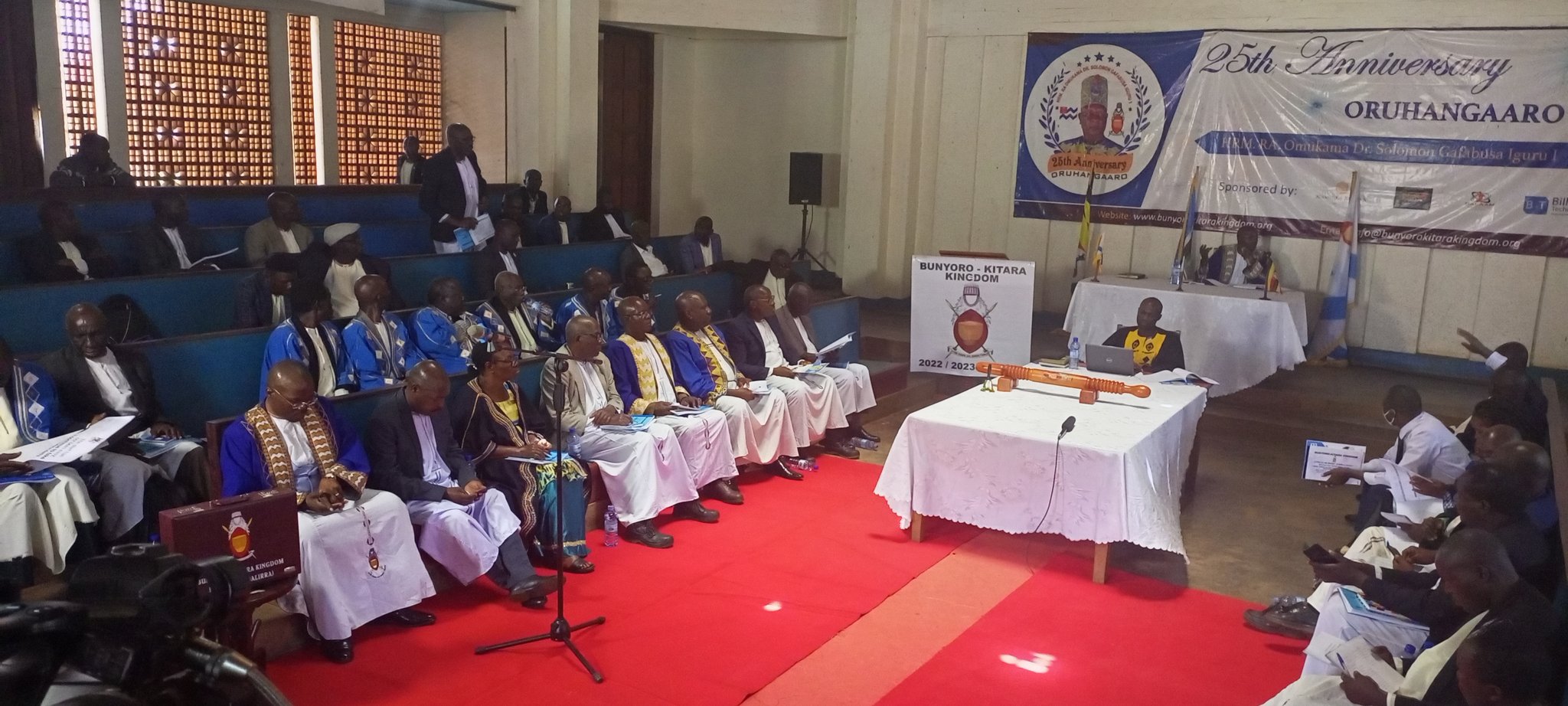The center piece of this regalia is a royal stool (27) covered with bark cloth, lion and leopard skin (41). On the left are three of nine ancient royal drums (1-3) and behind them Bronze Age spears in s sequence of their manufacture: copper (4), zinc (5-6), bronze (7) last is brass (8) whose iron spike bottom marks Bronze Age interface with Iron Age. Similarly to the right of the flag are two Lwo iron spears (31-32) Dabongo and Gotigoti that have copper tipped zinc covers.
Right side of Bronze Age spear an sticking out of a Nyapongo a Madi quiver (9) is an arrow of zinc blades (10) and a barbed arrow (11 center). It resembles archaeological finds of Bigo Earth forts. There is also a spike (12) used as iron rod currency unit of money (ojbelov). It was used in the Greek City State of Bioitia whose inhabitants occupied Luxor, capital of Egypt between 2025 and 1700 BC, 800 kilometres up the Nile from the Mediterranean. They re-named it Thebes and introduced ojbelov money. High cone crowns (back row) 13-15 & 26) are of ancient Egyptian usage.
Top ridge of the chief crown Rwabusungu (24 behind the royal stool) is lined with ojbelov. A king to be sworn into office put it on and hammered a piece of metal four times to become head of metal work, a key industry of Bunyoro-Kitara through the ages.
As usual precious articles decorate crowns so do cowries’ shells, also used as money, on crown (51) in foreground. Orange bishop (etuku) feathers also decorate crown (53) and Kasunsunkwanzi (42). Prince Kaboyo stole away with this crown to rebel and establish Tooro Kingdom in 1830. Etuku birds inhabit the Semuliki River country of Butuku on the Uganda Congo border. On hooks of two beaded tripods of brass (18-21 left of ojbelov crown) hang quivers (16 & 23), wooden bows and a walking stick reinforced with bans of copper (18-19-20 & 22).
A giant spear Kinegena (25) behind the royal stool testifies that iron dwarfed other metals. It availed effective tools to cut down forests and till land and arm leaders (33-39) that curved new territories. Hanging on a garden rake (28 left of flag) is a bundle of bark cloth (28). It holds a gourd containing millet grains and field peas (29). This is agricultural symbolism.
The fingers of the garden rake (28) symbolize sparks of lightning and underpin the ruthlessness of early Iron Age rulers like Kagoro Araali. (Byara Nkanduro Matambara Gatosha). To this era belongs a sword (45) with its wooden sheath (44) a hoe (46) to right of the drums. By these articles kings on enthronement swore to defend the Kingdom, ensure justice and mobilize people to grow crops.
History is re-told in songs sung in original styles and content accompanied by entimbo drums (14 & 40). A yellowing cream flag with blue waves and a red emblem (29) was designed by CMS missionaries after colonial conquest to signify peace. Research is ongoing for in depth information on these items and the various crowns in the foreground (47, 48, 49, 52 & 54) as well as others not shown here.





